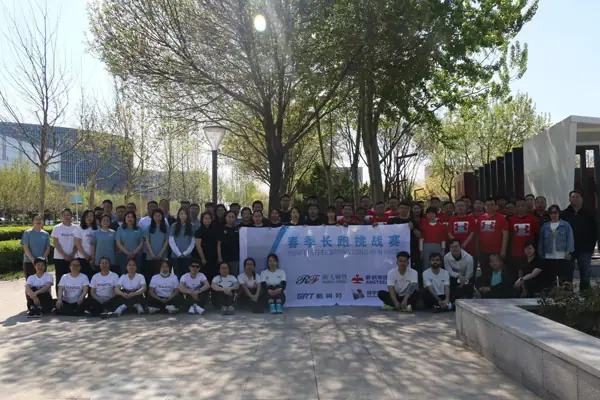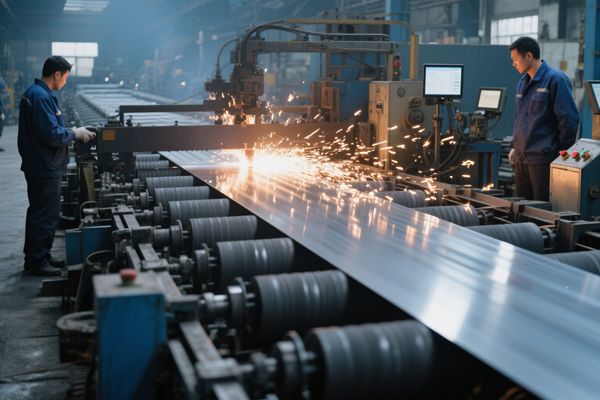From Sheet to Structure: Hot-Rolled Steel as the Backbone of Industrial Fabrication
In the world of industrial fabrication, where strength, efficiency, and scalability are paramount, one material consistently forms the foundational core: hot-rolled steel. This ubiquitous product is the unsung hero that transforms from a simple sheet or coil into the skeleton of modern infrastructure, machinery, and industry. Here’s how hot-rolled steel serves as the indispensable backbone of this critical sector.
1. The Production Advantage: Efficiency at Scale
The process of hot-rolling involves heating steel slabs above their recrystallization temperature (typically over 1,700°F / 925°C) and passing them through a series of rollers to achieve the desired thickness and shape.
Key Advantage: This high-temperature process makes the steel easier to form, allowing for the production of large volumes of standardized profiles—from wide plates and sheets to structural beams (I-beams, H-piles), channels, and angles—at a lower cost than cold-rolled or forged alternatives.
Result: Fabricators get a readily available, cost-effective raw material that is the starting point for countless projects.
2. Why Fabricators Choose Hot-Rolled Steel: The Material Merits
For industrial fabricators, the properties of hot-rolled steel are perfectly aligned with their needs:
Superior Strength & Formability: While it has a higher yield strength than cold-rolled steel, it retains enough ductility to be bent, welded, and punched without cracking. This is crucial for creating custom structural components.
Excellent Weldability: The predictable chemistry and uniform internal structure of hot-rolled steel (e.g., grades like A36, A572 Gr 50, S355JR) make it ideal for the heavy welding required in structural fabrication, ensuring strong, reliable joints.
Economic Efficiency: It provides the best strength-to-cost ratio for large-scale structural applications. The savings on raw material costs directly impact the overall project budget.
Versatility in Form: It is available in a vast array of standard shapes and thicknesses, making it the go-to choice for everything from the frame of a warehouse to the body of a mining truck.
Consistency in Performance:Modern mills control rolling parameters with precision, ensuring uniform thickness, mechanical properties, and dimensional accuracy across batches. This consistency is critical for fabricators, who rely on predictable material behavior to meet safety standards and engineering specifications.
3. The Fabrication Journey: From Raw Stock to Finished Structure
The journey of hot-rolled steel in a fabrication shop is a testament to its versatility:
Cutting: Large plates and sections are cut to size using plasma cutters, laser cutters, or oxy-fuel torches. The scale of hot-rolled plate allows for multiple parts to be nested and cut from a single piece, minimizing waste.
Forming: Press brakes and rolling machines are used to bend and form the steel into complex shapes—from simple brackets to conical sections for silos.
Welding & Assembly: Components are meticulously jigged and welded together into larger sub-assemblies and final structures. The consistency of hot-rolled steel ensures uniform weld quality throughout.
Finishing: The final structure is often shot-blasted to remove mill scale and primed or painted with protective coatings to withstand its operational environment.
4. Ubiquitous Applications: The Structures It Builds
Hot-rolled steel is the literal and figurative framework for industry:
· Building & Construction: The primary material for structural frames, beams, columns, and reinforcing bars in commercial buildings, factories, and bridges.
· Heavy Machinery: Forms the chassis, frames, and booms of excavators, cranes, and agricultural equipment due to its ability to withstand immense stress and fatigue.
· Material Handling: Used to construct warehouse racking systems, conveyor frames, and pallet racks.
· Industrial Storage: The base material for pressure vessels, storage tanks, and silos, often using hot-rolled steel plate.
· Transportation: Found in the undercarriages of railcars and the trailers of heavy-haul trucks.
5. Hot-Rolled vs. Cold-Rolled: Choosing the Right Backbone
It’s crucial to understand why hot-rolled is often chosen over cold-rolled for structural work:
| Feature | Hot-Rolled Steel | Cold-Rolled Steel |
| Surface | Rough, scaled finish | Smooth, polished finish |
| Strength | High strength, good ductility | Higher strength, harder |
| Tolerances | Wider dimensional tolerances | Tight, precise tolerances |
| Primary Use | Structural frames, hidden parts | Visible parts, appliances, auto bodies |
| Cost | Lower | Higher |
Conclusion: For applications where ultimate structural integrity is more critical than a perfect surface finish, hot-rolled is the unequivocal choice.
Conclusion:
The Unshakeable Foundation
Hot-rolled steel is far more than just a commodity; it is the fundamental building block of industrial civilization.
Its unique combination of strength, workability, and economies of scale makes it irreplaceable for fabricators who turn raw metal into the structures that power our world.
From the sheet on the factory floor to the skyscraper towering above, hot-rolled steel truly is the backbone of industrial fabrication.
The Future: Innovations in Hot-Rolled Steel
As industries demand lighter, stronger, and more sustainable materials, hot-rolled steel continues to evolve. Advanced alloys (e.g., high-strength low-alloy, or HSLA, steels) offer enhanced performance while reducing weight, cutting fuel consumption in transportation and lowering construction costs. Additionally, recycling practices ensure that hot-rolled steel remains one of the most eco-friendly structural materials, with a recycling rate exceeding 90% in many countries.







